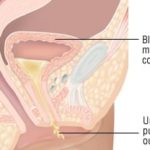1. Compared to standard midurethral slings, single-incision mini-slings were noninferior in achieving patient-reported success in treating stress urinary incontinence at 15 and 36 months following the procedure.
2. Incidence of groin and thigh pain was higher in those receiving mini-slings than midurethral-slings at 15 months but not at 36 months.
Evidence Rating Level: 1 (Excellent)
Study Rundown: Stress urinary incontinence is a relatively common issue in women, with a measurable proportion requiring surgical intervention. Midurethral slings made of synthetic mesh have been the most often used method. The two approaches to midurethral sling placement are retropubic and obturator tapes, both of which are associated with adverse events such as bladder dysfunction and pain. Single-incision mini-slings were recently introduced and purported to lower perioperative complications. The current study was a pragmatic, randomized, noninferiority trial to compare mini-slings against midurethral slings in the surgical treatment of stress urinary incontinence in UK women. At both 15 and 36 months of follow-up, patient-reported similar success rates in the two groups. Groin and thigh pain rates were similar at 36 months. Quality of life and sexual function outcomes were also comparable, except for dyspareunia, which was more common in the mini-sling group. Overall, single-incision mini-slings were found to be noninferior to midurethral slings in achieving patient-reported success for stress urinary incontinence at up to 36 months of follow-up.
Click here to read the study in NEJM
Relevant Reading: A randomized, nonblinded extension study of single-incision versus transobturator midurethral sling in women with stress urinary incontinence
In-Depth [randomized controlled trial]: The study was a pragmatic randomized noninferiority trial to compare the use of single-incision mini-slings against the standard method of midurethral slings for treating stress urinary incontinence in women. Female patients 18 years of age or older, who had stress urinary incontinence that had not responded to conservative treatments and was scheduled to undergo a midurethral-sling procedure, were included. Exclusion criteria included anterior or apical prolapse of stage 2 or higher, previous surgery for stress urinary incontinence, concurrent surgery, previous pelvic irradiation, or pregnancy. Overall, 298 women were assigned to each of the mini-slings and midurethral slings groups, with 257 in each group undergoing the surgery. Crossovers were permissible due to patient preference or surgeon availability. Due to the difference in anesthetic procedures indicated for each group, blinding was not possible. The primary outcome was a patient-reported success, as characterized by the Patient Global Impression of Improvement (PGI-I) questionnaire, at 15 months post-randomization; failure was indicated by responses lower than very much improved or much improved. Secondary outcomes included postoperative pain, recovery time, objective measure of incontinence, quality of life, and sexual function. The safety of each approach was assessed through 36 months based on pain, exposure to sling material, complications, new onset of urinary urgency, dyspareunia, or intermittent catheterization by the patient. The noninferiority margin was defined as 10 percentage points. Overall at 15 months, 212 of 268 (79.1%) patients in the mini-sling group and 189 pf 250 patients (75.6%) in the midurethral-sling group reported therapy success. The adjusted risk difference was 4.6 percentage points; with a 95% confidence interval (CI) of -2.7 to 11.8, indicating noninferiority (P<0.001). Similarly, at 36 months, 177 of 246 patients (72.0%) in the mini-sling group and 157 of 235 patients (66.8%) in the midurethral-sling group reported success (adjusted risk difference, 5.7 percentage point; 95% CI, -1.3 to 12.8). Objective improvement at 15 months was observed in 85.7% of patients in the mini-sling group and 75.5% in midurethral-sling group (adjusted risk difference, 5.2 percentage points; 95% CI, -5.9 to 16.2). Secondary outcomes were similar across both groups, except for dyspareunia and coital incontinence, which were more common with mini-slings. More patients reported groin or thigh pain in the mini-sling group at 15 months but this normalized by 36 months. 24 patients (8.7%) in the mini-slings group received further surgery over 36 months, compared to 12 (4.6%) in the midurethral sling group. A 10-year follow-up was planned. Overall, this trial contributed to the body of evidence showing the noninferiority of single-incision mini-slings compared to standard midurethral slings in treating stress urinary incontinence in women.
Image: PD
©2022 2 Minute Medicine, Inc. All rights reserved. No works may be reproduced without expressed written consent from 2 Minute Medicine, Inc. Inquire about licensing here. No article should be construed as medical advice and is not intended as such by the authors or by 2 Minute Medicine, Inc.


